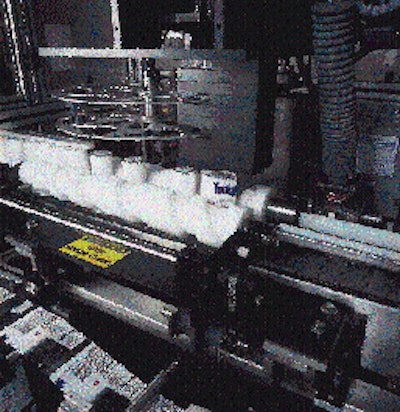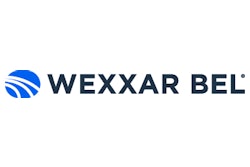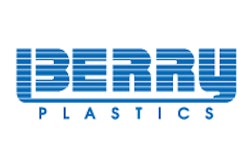
For years family-owned Cacique, Inc. (pronounced "Ca-SEE-kay") has carved out a successful niche in the specialty ethnic foods market, being a leading producer of Mexican-style cheeses. But when the City of Industry, CA, dairy food processor wanted to enter the drinkable yogurt business, a sleepy $6 million category in the U.S., it knew it had to promote not just awareness of its Yonique(TM) ("Yo-NEEK") product, but the entire category. That's because drinkable yogurt has never quite caught on with U.S. consumers, even though it's been popular for years in Latin America as well as Europe and Asia.
"We had been tracking the disappointing results of a couple of regional liquid yogurt brands that were packaged in a more traditional way," says Jay Mainthia, director of marketing. To succeed, "we needed an exciting, attention-getting package design that would readily explain usage-something that visually communicated 'drink me.'"
Just launched in October, Yonique is available in seven flavors in a custom-molded 7-oz high-density polyethylene container in striking, full-body shrink labels reverse-printed with 7-color gravure graphics. Sold in traditionally strong yogurt markets in California, Arizona, Texas and Florida, the product retails for 69¢ to 89¢ and can be found in the refrigerated yogurt section.
Designed for on-the-go consumers who want a healthy product in a convenient package, the container's shape is more than just pleasing to the eye. It was designed to fit easily in the hand as well as in an automobile cupholder. And since the product's drinkable, consumers don't need a spoon to consume it.
Stackable, too
In addition to good looks and functionality, stackability was a prime consideration to help out those retailers who may have shelving fixed at the height of quart milk containers. Two stacked Yonique containers equal the height of a quart milk container.
There is no closure component for the single-serve container apart from a heat-sealable foil lid, which is protected by the shrink sleeve extending over the top for tamper evidence.
The design process originated with package design firm Van Noy Group (Torrance, CA) and went through a series of revisions before the final design was modified and perfected by Cacique in-house in the form of a CAD drawing. Cacique took the drawing to an outside vendor (which Cacique didn't identify) that produced a series of prototypes before Cacique settled on a final design, which was then taken to blow molder Setco (Anaheim, CA). Setco built the production molds at a frantic 14-week pace to meet the deadline for Cacique's October launch. The container is injection blow molded-as opposed to straight injection molding-because injection blown containers are better able to withstand the top load compression that occurs during filling and lidding.
The molder overcame a number of challenges involved in creating the complex shape, not least getting effective wall distribution. "The container is thicker at the neck, and the walls taper to a lesser thickness toward the heel of the container," says Ana de CSigmardenas, project manager. The average wall thickness is 0.038", above industry-standard for HDPE dairy containers, she points out.
Accenting the container's shape are the high-impact graphics on the sleeve, depicting vivid fruit vignettes specific to each flavor and executed by Cacique's ad agency, Acento Advertising (Los Angeles, CA). The 2-mil high-shrink polyvinyl chloride sleeve material is printed on an 8-station gravure press by Sonoco Engraph Label Group (Moorestown, NJ). In addition to four-color process, there are two PMS line colors, a background white and a low-intensity spot glue that keeps the sleeve from moving around once it's shrunk onto the container. A small "pedestal" molded into the container's bottom helps the sleeve shrink into place properly.
One of the central challenges to the whole project was getting the sleeve to shrink without distorting the graphics, a difficult feat given that the material shrinks in different proportions across the surface of the container's sloping geometry. Engraph used a computer to pre-distort the printed image so that it would turn out correctly after coming out of the heat tunnel. Cacique is continuing to perfect the shrink process, says de CSigmardenas.
Focus group testing showed the package and label combination to be a winner. There are no plans at the present time for other sizes, although Cacique says it will monitor consumer feedback and offer other sizes if demand warrants it.
New product, new line
Betting big on the product's success, Cacique installed a brand new high-speed filling line to accommodate the container. Engineered in-house, the line was designed for minimal labor. But Cacique declines to specify how many operators are on the line, nor will it divulge packaging speeds. With an eye towards the future, quick changeover and the ability to package multiple products were two important criteria in selecting the equipment. Integration was also a factor. "All machinery was designed to go through one central interface panel and will eventually operate under customized software," says de CSigmardenas.
The process starts out as the containers are delivered to the packaging line by an Omega (Exton, PA) unscrambler, chosen for its ability to handle the unique container shape by gripping each container at the middle. An ultrasonic sensor verifies the container position and signals the machine to pivot the container rightside up if necessary. The gripper then releases the container onto the conveyor belt.
Containers convey into an Osgood (Oldsmar, FL) multi-head filler/sealer that fills the yogurt and applies a pre-cut foil/film lid via a pick-and-place system. After the lids are heat-sealed to the container, the machine folds back the tabs on the lids before discharging filled, sealed containers. Cacique declined to go into more specifics on the filler, especially its clean-in-place feature, citing proprietary modifications.
Filled containers have a two-month refrigerated shelf life, due in part to Cacique's extensive efforts to maintain a clean production environment. All equipment and materials, including containers and boxes, are tested continually over 1ꯠ times a day for organic contaminants using bacterial enumeration tests. "We want to make sure we as well as our vendors maintain our quality standards," says de CSigmardenas.
After filling, the containers are conveyed to a shrink sleeve labeler from PDC Intl. (South Norwalk, CT), where they're first engaged by that machine's timing screw. The printed rollstock from Sonoco Engraph is hot-stamped with a best-before code date, perforated, cut and guided over the container by a mandrel that assures positive control during the entire sleeving process. Although there are several challenges in getting the sleeve to shrink into place correctly, Cacique says the sleeve labeler didn't require any special modifications. After sleeves are placed, containers travel through a heat tunnel from K.O.E., a division of PDC. Because yogurt is a cultured product, de CSigmardenas says, the heat shrink process "[does] not affect the integrity of the product." Still, "the product's exposure to heat is very limited and closely monitored."
Sealed and labeled containers enter a matrix former at the robotic case packer from Fanuc (Auburn Hills, MI), where the robot picks up 12 containers at a time-an entire caseload-and deposits them in a case that's been erected by a Wexxar (Naperville, IL) case erector. The robot's gripper has what de CSigmardenas describes as a sandpaper-textured tape that creates just enough friction to pick up the containers without marring the shrink labels.
For its part, the case erector uses a series of tiny "fingers" that slide into the space between the corrugated fluting and liner at the very edge of the blank to open the box. Cacique prefers this type of opening method to suction, since it feared the latter might pose difficulties in its moist dairy processing environment.
Both the case erector and robotic packer are standard machines, although Cacique purchased the equipment "with the future in mind," says de CSigmardenas. "The equipment is a lot more versatile than an integrated erector/packer. For example, it takes only five minutes to program the robot to work with different products." The cases are sealed on a Wexxar case sealer. After sealing, product is palletized and stored for shipment. To distinguish its product in the distribution environment, Cacique's cases are flexo-printed with a repeating series of white milk containers.
Even as Cacique irons out final wrinkles in both filling and labeling, it's pushing forward with its marketing plan, filling product on two shifts. The company says it has already achieved 80% distribution into the markets it serves. And it continues to invest in its new line, installing additional robotics for palletizing and linking up machine-to-machine communications. That should position its packaging operation to handle not only current production but whatever may come in the future as well.


























